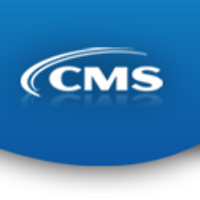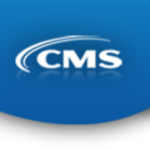The U.S. Department of Health and Human Services (HHS) Secretary Alex Azar and Centers for Medicare & Medicaid Services (CMS) Administrator Seema Verma are announcing the CMS Primary Cares Initiative, a new set of payment models that will transform primary care to deliver better value for patients throughout the healthcare system. Building on the lessons learned from and experiences of the previous models, the CMS Primary Cares Initiative will reduce administrative burdens and empower primary care providers to spend more time caring for patients while reducing overall health care costs. The models were developed by the Innovation Center under the leadership of Adam Boehler and are part of Secretary Azar’s value-based transformation initiative.
“For years, policymakers have talked about building an American healthcare system that focuses on primary care, pays for value, and places the patient at the center. These new models represent the biggest step ever taken toward that vision,” said HHS Secretary Alex Azar. “Building on the experience of previous models and ideas of past administrations, these models will test out paying for health and outcomes rather than procedures on a much larger scale than ever before. These models can serve as an inflection point for value-based transformation of our healthcare system, and American patients and providers will be the first ones to benefit.”
Empirical evidence shows that strengthening primary care is associated with higher quality, better outcomes, and lower costs within and across major population subgroups. Despite this evidence, primary care spending accounts for a small portion of total cost of care, and is even lower for patients with complex, chronic conditions. Primary care clinicians serve on the front lines of the healthcare delivery system, furnishing services across a wide range of specialties, from family medicine to behavioral health to gerontology. For many patients, the primary care clinician is the first point of contact with the healthcare delivery system. CMS’s experience with innovative models, programs and demonstrations to date have shown that when incentives for primary care clinicians are aligned to reward the provision of high value care, the quality and cost effectiveness of patient care improves.
“As we seek to unleash innovation in our health care system, we recognize that the road to value must have as many lanes as possible,” said CMS Administrator Seema Verma. “Our Primary Cares Initiative is designed to give clinicians different options that advance our goal to deliver better care at a lower cost while allowing clinicians to focus on what they do best: treating patients.”
Administered through the CMS Innovation Center, the CMS Primary Cares Initiative will provide primary care practices and other providers with five new payment model options under two paths:
Primary Care First and Direct Contracting.
The five payment model options are:
- Primary Care First (PCF)
- Primary Care First – High Need Populations
- Direct Contracting – Global
- Direct Contracting – Professional
- Direct Contracting – Geographic
The Primary Care First (PCF) payment model options will test whether financial risk and performance based payments that reward primary care practitioners and other clinicians for easily understood, actionable outcomes will reduce total Medicare expenditures, preserve or enhance quality of care, and improve patient health outcomes. PCF will provide payment to practices through a simplified total monthly payment that allows clinicians to focus on caring for patients rather than their revenue cycle. PCF also includes a payment model option that provides higher payments to practices that specialize in care for high need patients, including those with complex, chronic needs and seriously ill populations (SIP).
Both models under PCF incentivize providers to reduce hospital utilization and total cost of care by potentially significantly rewarding them through performance-based payment adjustments based on their performance. These models seek to improve quality of care, specifically patients’ experiences of care and key outcome-based clinical quality measures, which may include controlling high blood pressure, managing diabetes mellitus, and screening for colorectal cancer. PCF will be tested for five years and is scheduled to begin in January 2020. A second application round is also planned for participants starting in January 2021.
Like the PCF payment model options, the Direct Contracting (DC) payment model options are also focused on transforming primary care, allowing health care providers to take greater control of managing the costs of care for an aligned population of Medicare fee-for-service (FFS) beneficiaries. While the PCF models are focused on individual primary care practice sites, the DC payment model options aim to engage a wider variety of organizations that have experience taking on financial risk and serving larger patient populations, such as Accountable Care Organizations (ACOs), Medicare Advantage (MA) plans, and Medicaid managed care organizations (MCOs). The DC payment model options are designed to create a competitive delivery system environment where organizations offering greater efficiencies and better quality of care will be financially rewarded. The payment model options include a focus on care for patients with complex, chronic needs and SIPs, as well as a voluntary alignment option that allows beneficiaries to align with the health care provider of their choosing.
Depending on the DC payment model option in which an organization is participating, the model participant will receive a fixed monthly payment that can range from a portion of anticipated primary care costs to the total cost of care. Participants in the global payment model option will ultimately bear full financial risk, while those in the professional payment model option will share risk with CMS. This will provide prospective model participants a range of financial risk arrangements from which to choose while providing a more predictable revenue stream and reducing health care provider burden commensurate with level of financial risk.
In addition, CMS is seeking public comment on one DC payment model option with an expected performance period launch in January 2021. The Geographic Population-Based option is designed to offer innovative organizations the opportunity to assume responsibility for the total cost of care and health needs of a population in a defined target region. Driving accountability to a local level empowers communities to devise strategies best designed to meet their health care needs. Given the novelty of this option, we are seeking public comment through a new Request for Information.
Together, CMS anticipates these five payment model options administered under the Primary Cares Initiative could:
- Provide better alignment for over 25 percent of all Medicare FFS beneficiaries – nearly 11 million Medicare beneficiaries would potentially be included (a collective 5 million beneficiaries in the DC payment model options and a collective 6.4 million in PCF payment model options);
- Offer new participation and payment options and opportunities for an estimated one in four (25 percent) primary care practitioners as well as other health care providers; and
- Create new coordinated care opportunities for a large portion of the 11-12 million beneficiaries dually eligible for Medicare and Medicaid, specifically, those in Medicaid managed care and Medicare FFS.
All five payment model options focus on supporting care for patients who have chronic conditions and serious illnesses. Through the PCF payment model options, high need patients with serious illness who do not have a primary care practitioner or care coordination and indicate an interest in receiving care from a practice participating in the model will be assigned to a model participant. Participating practices that choose to care for SIP patients will be required to provide care to clinically stabilize the patient. All payment model options include enhancements to encourage participation of providers who are focused on care for these populations.
CMS based the design of these payment model options on considerable stakeholder input. The models draw from Physician-Focused Payment Model Technical Advisory Committee (PTAC) review of proposals, including, but not limited, to The Advanced Primary Care Model from the American Academy of Family Physicians, An Innovative Model for Primary Care Office Payment from Jean Antonucci, MD, The Patient and Caregiver Support for Serious Illness Model from the American Academy of Hospice and Palliative Medicine, and The Advanced Care Model from the Coalition to Transform Advanced Care. All payment model options are responsive to stakeholder feedback that we received from advanced primary care practices expressing interest in accepting increased financial risk in exchange for greater flexibility and fewer requirements.
- View a fact sheet on the CMS Primary Care First payment model options. View more information on CMS Primary Care payment model options.
- View a fact sheet on theDirect Contracting payment model options. View more information on the Direct Contracting model options.
- View a fact sheet on the CMS Primary Cares Initiative.
- Review the Direct Contracting—Geographic Request for Information.
CMS is also releasing the first annual evaluation report for the Comprehensive Primary Care Plus (CPC+) Model, which details the implementation experience and impact on beneficiary outcomes over the first year for practices that started participating in the CPC+ model in January 2017. View the findings-at-a-glance.


